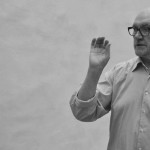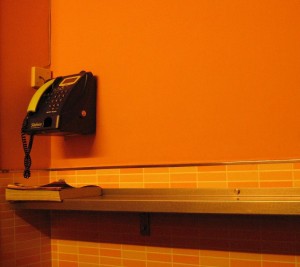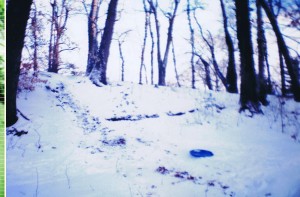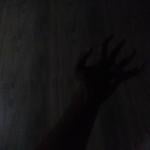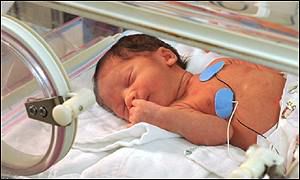 News from Alabama is that researchers obscured risks of blindness, brain damage, and death in order to convince parents of 1,300 premature infants to participate in a medical study. In my last essay I argued the seemingly esoteric point that disciplines like philosophy are essential to good science. Here is a practical example: science run amok, facilitated by well-meaning people who have been steeped in an inhumane and unscientific mode of thinking that masquerades as “how science is done.”
News from Alabama is that researchers obscured risks of blindness, brain damage, and death in order to convince parents of 1,300 premature infants to participate in a medical study. In my last essay I argued the seemingly esoteric point that disciplines like philosophy are essential to good science. Here is a practical example: science run amok, facilitated by well-meaning people who have been steeped in an inhumane and unscientific mode of thinking that masquerades as “how science is done.”
Drastically premature babies need oxygen, and this is inherently dangerous. Too little oxygen can cause brain damage or death. Too much can damage the eyes, sometimes to the point of blindness. Medical practitioners exercise judgment about how much oxygen to give any particular infant. But some scientists have asked—quite reasonably—whether they might sometimes be giving too much oxygen, inducing unnecessary eye damage. Researchers attempted to study this in the 1950s, but there were problems, not the least of which—in their view—were nurses surreptitiously increasing oxygen levels whenever they thought babies slated to receive lower amounts were suffering as a consequence.
A research team centered at the University of Alabama-Birmingham, however, came up with a clever way to elide this complication. They manipulated oxygen meters in the pediatric intensive care units where they were running their experiments, so that nurses were misled about the actual oxygen babies were receiving. Now, you see, we can get a clean test. Clean tests are essential when you do science.
What were the results, after five years of assigning some infants to higher levels of oxygen, and others to lower levels? Twice as many infants in the high-oxygen group developed eye disease, while over 20% more babies died in the low-oxygen group compared to their counterparts.
A review by the Office of Human Research Protections (OHRP) in the U.S. Department of Health and Human Services concludes that risk-disclosures to parents were inadequate, because they listed potential benefits, but mentioned no dangers beyond possible skin irritation from the oxygen monitors. The researchers defend themselves by noting that none of the babies received oxygen outside the range deemed acceptable in standard medical practice. Therefore, they explain, they told the truth when they told parents that “there is no predictable increase in risk for your baby.”
But of course they were predicting risks, at least amongst themselves and their funders. This suspicion was the entire purpose, after all, of the study—to test whether premature infants are subjected to unnecessarily high risks of blindness by current practices. But because no such study has conclusively shown this, there is no scientific proof of the danger. Thus the researchers felt justified in not disclosing their hypotheses to the parents. There was no math, after all.
Well, there is now.
Here’s why this is bad science, but part and parcel of how science gets taught today. As the OHRP noted, premature infants are not randomly assigned oxygen levels. Caregivers around the world make judgments about what those oxygen levels should be—often by the hour—based on the particular circumstances and characteristics of each baby. “Indeed, a core principle of medical ethics,” noted OHRP investigators, “requires physicians to make such judgments, even in the face of uncertainty. All of us, as patients, rely on our doctors to do precisely that.”
To these researchers, however, there was no scientific knowledge guiding caregiver decisions. Hence those decisions could be disregarded, and parents told that there were no risks to participating in the study, all while researchers deliberately kept their infant subjects at two ends of the acceptable oxygen range precisely, as their own protocols reveal, to generate the greatest possible difference in health outcomes.
I am not saying these are evil people. My point is that their restricted sense of what qualifies as knowledge enabled them to obscure from parents the very risks they considered significant. They now justify their obfuscation with an epistemological sleight of hand: we didn’t know because there was no mathematical proof. But I guarantee you, when they secured the federal funds that underwrote this research, they did not declare utter ignorance about potential outcomes. And it wasn’t their children lying helpless in those plastic boxes.
Other scientists have risen to their defense, claiming that because subjects were kept within acceptable oxygen levels, researchers shouldn’t even have been required to get parental consent. Understand their reasoning: We, the scientists, have enough suspicion to spend precious time studying this. But because there’s inadequate empirical data, we are absolved of responsibility to share our suspicions with you, who actually love the human beings we will remember only by their case numbers.
Apparently the best defense is a good offense, because investigators have been cowed. These are big-name scientists, after all, at prestigious institutions, funded by major federal agencies. Further action is suspended until a public hearing, “to allow input from all interested parties.” You know who won’t be at that meeting? The parents of these babies. Nor you, nor me. Nobody, in fact, who believes doctors ought not be in the business of running secret experiments on their patients.
Please understand, this is not a brief against medical studies. It is an argument that slavery to laboratory empiricism yields subpar science. What could these researchers have done differently? Beyond full disclosure, they could have treated nurse interventions as something worth studying, rather than a variable to be controlled. Are there facilities where babies navigate the dangers of brain damage and blindness more safely? Might such variance be an indication that caregivers in those locations have some valuable—if not yet quantified or articulated—tacit knowledge from which researchers could glean lifesaving insights?
This is not an unheard of concept—witness efforts to illuminate best medical practices in areas like germ containment and post-surgical care. But it requires humility, and a recognition that not all knowledge originates in an equation. Good scientists understand that.
Tony Woodlief lives outside Wichita, Kansas, and is the author of a spiritual memoir, Somewhere More Holy. His essays on faith and parenting have appeared in The Wall Street Journal, The London Times, and WORLD Magazine. His short stories, two of which have been nominated for Pushcart prizes, have been published in Image and Ruminate. His website is www.tonywoodlief.com.



